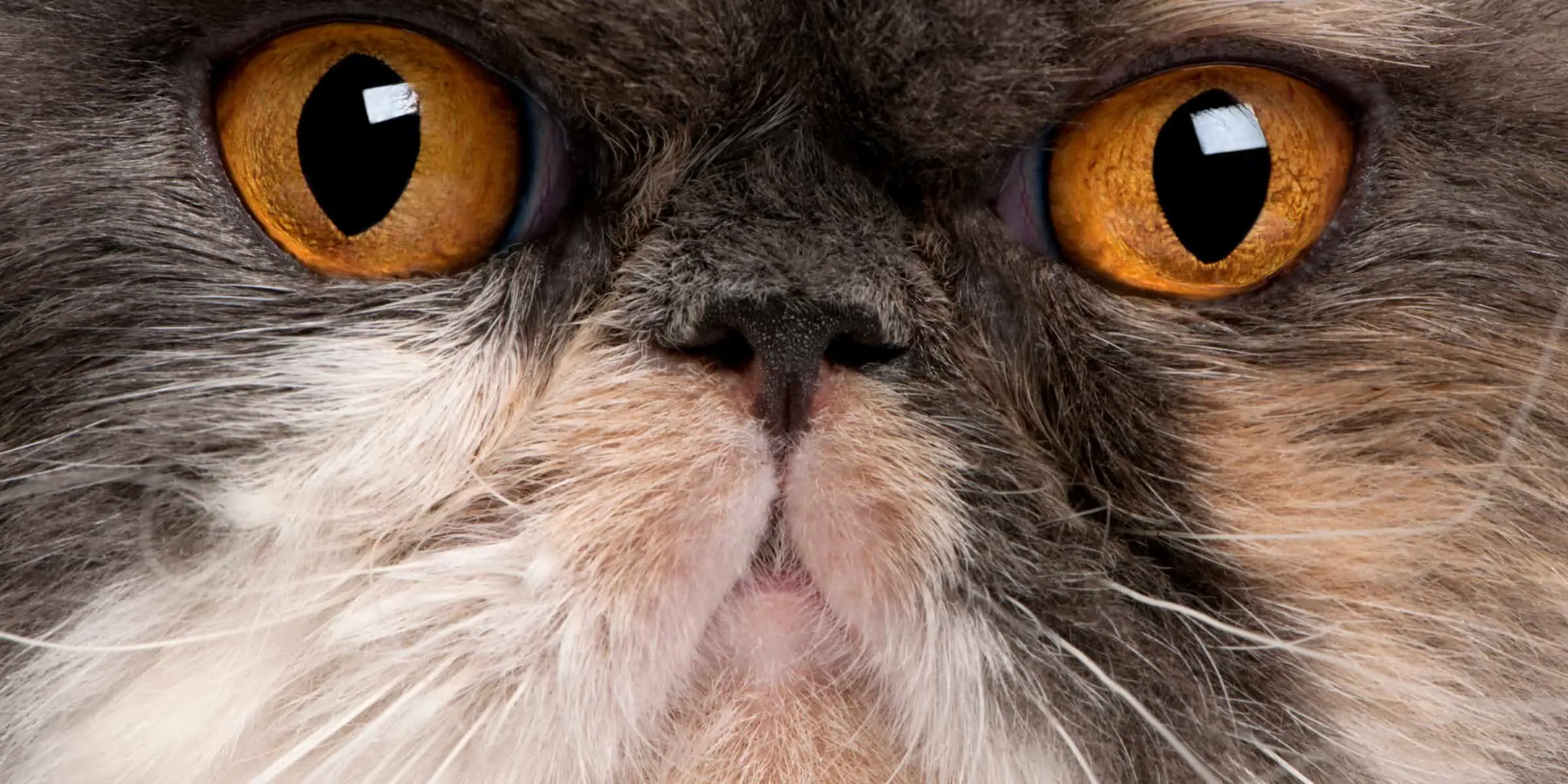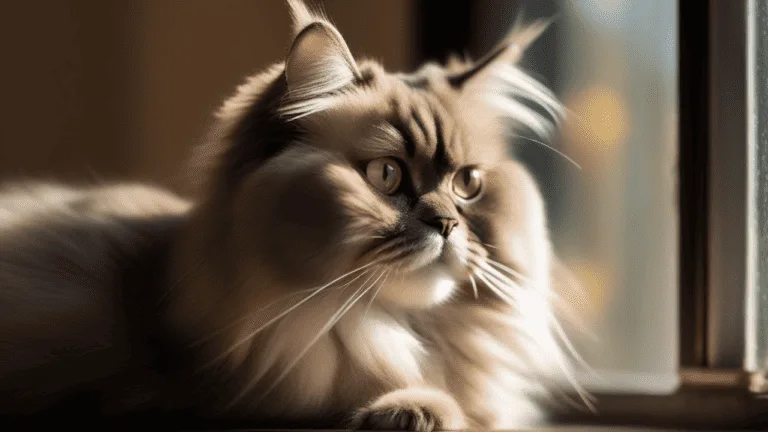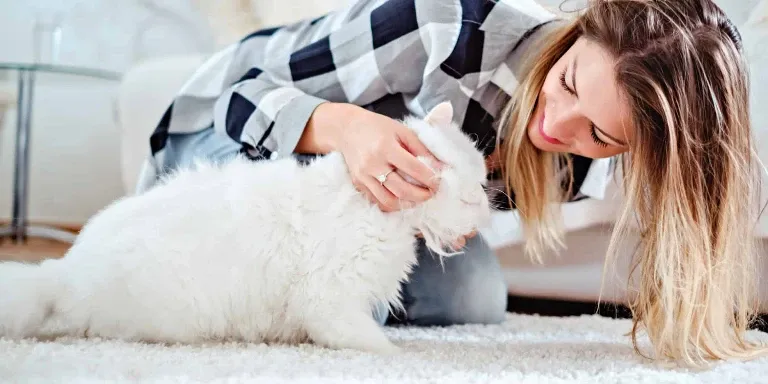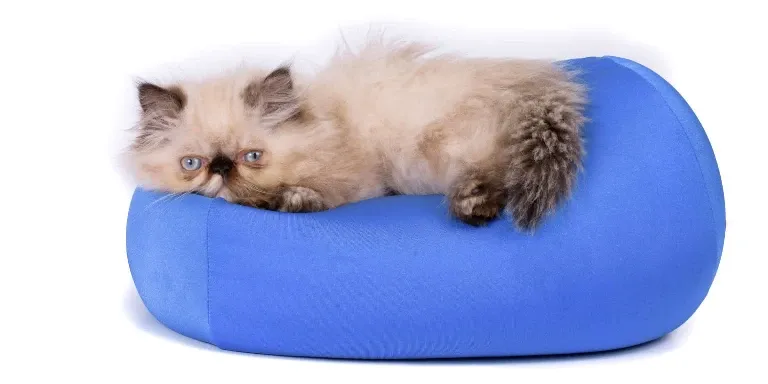The Best Fluffy Pancakes recipe you will fall in love with. Full of tips and tricks to help you make the best pancakes.

Have you ever dreamed of having a fluffy, luxurious Persian cat as a companion in your home? With their striking appearance and sweet temperament, it’s easy to see why these felines are so popular. But before you bring one of these beauties into your life, it’s important to consider whether or not they make good house cats.
Persian cats make good house cats as they are quiet, affectionate, and adaptable to indoor living. They are also low-maintenance and require minimal exercise, making them ideal for apartment dwellers or those with busy lifestyles. However, their long hair requires regular grooming to prevent matting and tangles.
Like any animal, Persian cats have their own unique set of characteristics and needs that must be met. They are known for their gentle nature, affectionate personalities, and love of attention. However, they also require a quiet, low-stress living environment and may have health concerns that require extra attention.
In this article, we’ll dive into the details of what it’s like to live with a Persian cat and help you decide if they are the right fit for your home.
Characteristics of Persian Cats
If you’re looking for a furry companion who loves lounging around, Persian cats are the purrfect choice! These cats are known for their luxurious, thick coats, flat faces, and big eyes that make them irresistible to many. However, there’s more to these cats than just their looks. They have some unique personality traits that make them great house cats.
One of the most important things to know about Persian cats is that they require a lot of grooming. Their long, thick coats require daily brushing to prevent matting and tangling. This can be time-consuming, but if you’re willing to put in the effort, you’ll be rewarded with a beautiful, healthy cat. Persians also tend to shed a lot, so be prepared for some extra vacuuming.
In terms of personality, Persian cats are known for being calm, affectionate, and often quite lazy. They love to lounge around and be pampered, and they don’t require a lot of exercise or playtime. They’re also generally good with children and other pets, making them a great addition to a family. However, they can be a bit shy around strangers, so be patient if your Persian takes some time to warm up to new people.
Overall, if you’re looking for a low-maintenance, cuddly companion, a Persian cat might be the perfect choice for you!
Indoor vs. Outdoor Living
Living exclusively indoors can provide a safe haven for your feline friend, much like a cozy blanket can comfort you on a chilly night. As a Persian cat owner, you may find yourself in the indoor vs. outdoor debate. While Persian cats aren’t known for their love of the outdoors, some may argue they need fresh air and exercise. However, the truth is that Persian cats can thrive indoors as long as you provide them with a perfect indoor environment.
One of the pros of keeping your Persian cat indoors is that you can protect them from potential dangers such as cars, predators, and diseases. Indoor cats tend to live longer than their outdoor counterparts due to the lower risk of accidents and illnesses. Moreover, Persian cats have a delicate coat that requires regular grooming to prevent matting, dirt, and parasites. By keeping them indoors, you can ensure their coat stays clean and healthy.
Setting up the perfect indoor environment for your Persian cat involves providing them with plenty of toys, scratching posts, and hiding places. Persian cats are known for their love of lounging and napping, so a cozy bed or a window perch can also keep them entertained. Additionally, you should consider investing in high-quality cat food that meets their dietary needs and avoids obesity.
By creating a stimulating and safe indoor environment, you can keep your Persian cat happy, healthy, and content.
Activity Levels and Exercise Needs
Keeping your furry friend active and healthy is crucial for their overall well-being, so it’s important to understand their exercise needs and find ways to incorporate physical activity into their daily routine.
Persian cats may have a reputation for being lazy and inactive, but they still require regular exercise to stay healthy and happy. As a house cat, your Persian may not have access to the same opportunities for physical activity as an outdoor cat, but there are still plenty of ways to keep them active and entertained inside.
Here are some ideas for indoor entertainment and interactive toys that can help keep your Persian cat active:
- Puzzle feeders: These toys challenge your cat to figure out how to get a treat or piece of food out of a tricky puzzle. This type of toy can provide mental stimulation as well as physical activity.
- Laser pointers: Many cats love chasing after the beam of a laser pointer. Just be sure not to shine it directly in their eyes and to give them a chance to ‘catch’ the light occasionally.
- Cat trees and scratching posts: These items provide a great opportunity for your cat to climb, scratch, and play. Look for a tall tree with different levels and hiding spots to keep your cat entertained for hours.
By incorporating these types of toys and activities into your Persian cat’s daily routine, you can help keep them healthy and happy while also preventing boredom and destructive behaviors. Remember to always supervise your cat during playtime and to choose toys that are safe and appropriate for their age and size.
Health Concerns
As a potential owner of a Persian cat, it’s important to be aware of the common health issues they may face. These may include respiratory problems, eye conditions, and dental issues.
However, with proper preventative care and maintenance, you can help ensure your Persian cat lives a happy and healthy life. Regular vet check-ups, a balanced diet, and regular grooming can all contribute to your cat’s overall health and well-being.
Common Health Issues in Persian Cats
Unfortunately, Persian cats are prone to a variety of health issues that can be quite costly to treat. Some of the most common health concerns for this breed include respiratory problems, dental issues, and eye infections.
Additionally, Persian cats are known to suffer from skin and coat problems due to their long, thick fur. This means that grooming frequency is a crucial aspect of caring for a Persian cat, as their coats can easily become matted and tangled without regular brushing.
In order to prevent or treat some of these health issues, it’s important to provide your Persian cat with a breed-specific diet that meets their nutritional needs. This can help prevent dental problems and other health concerns that may arise from a poor diet.
Additionally, regular vet check-ups are recommended to catch any potential health problems early on and to ensure that your cat is receiving the proper care and treatment they need. With proper care and attention, Persian cats can make great house cats, but it’s important to be aware of and prepared for their potential health issues.
Preventative Care and Maintenance
To keep your furry Persian cat healthy and happy, it’s crucial to prioritize preventative care and maintenance. This involves scheduling regular vet check-ups to ensure that your cat is up-to-date on vaccinations and to detect any potential health issues early on.
Additionally, it’s crucial to provide them with a balanced diet that meets their unique needs, as well as plenty of exercise to help maintain a healthy weight. Preventative grooming is also important for Persian cats, as their long, luxurious coats require regular brushing and occasional grooming appointments to prevent matting and skin issues.
Furthermore, environmental enrichment is crucial to keep your Persian cat mentally stimulated and happy. This includes providing them with scratching posts, toys, and plenty of hiding spots to explore. By prioritizing preventative care and maintenance, you can help ensure that your Persian cat lives a long, healthy, and happy life.
Living with Other Pets
If you’re considering adding a Persian cat to your household, it’s important to consider their compatibility with other pets.
When it comes to dogs, Persians can usually get along well with them as long as they’re introduced properly and given time to adjust to each other.
However, when it comes to other cats, Persians can be more selective and may need more time and patience to develop good relationships with their feline housemates.
Compatibility with Dogs
Like two peas in a pod, Persian cats and dogs can often become fast friends and make great housemates. However, introducing a dog to a household with a Persian cat requires careful management and a gradual process.
To successfully introduce a dog to a Persian cat, it’s important to first ensure that the cat feels safe and secure. This may involve temporarily separating the pets and gradually reintroducing them through scent-swapping and supervised interactions.
It’s also crucial to supervise their interactions at all times and provide separate areas for each pet to retreat to if needed. In the event of conflicts between the pets, it’s important to remain calm and redirect their attention, rather than scolding or punishing them.
With patience and proper management, Persian cats and dogs can coexist happily and harmoniously in the same household.
Getting Along with Other Cats
You can improve the chances of your Persian cat getting along with other feline companions by taking a few key steps. Firstly, you should introduce new cats slowly and carefully, allowing them to get used to each other’s presence over time.
This can be done by starting with short supervised visits, gradually increasing the time spent together. Additionally, it’s important to manage territorial behavior by providing separate areas for each cat to eat, sleep, and play in.
This will help to prevent conflicts over resources and reduce tension between your cats. Introducing new cats can be a stressful experience for both you and your furry companions, but with the right approach, it can be a success.
Creating a harmonious multi-cat household takes time and patience, but it’s worth it in the end. By following the above steps and managing territorial behavior, you can help your Persian cat make friends with their new feline roommates and enjoy a happy and peaceful home life.
Living with Children
Living with children can be a breeze when you have a Persian cat by your side. They are gentle and patient with little ones and make great companions for kids who love animals and are looking for a furry friend to play with. Persian cats are known for their docile personalities, making them an ideal choice for parents who want a pet that’s easy to care for and doesn’t require a lot of attention.
When parenting with a Persian cat, it’s important to introduce them to a new home slowly and carefully. Give them time to adjust to their surroundings and make sure they have a safe space to retreat to if they feel overwhelmed. It’s also important to supervise interactions between your children and the cat, especially if your child is very young and may not understand how to properly handle a pet.
Overall, Persian cats are great house cats for families with children. They are loving, calm, and make great companions for kids of all ages. As long as you introduce them to a new home with care and supervise interactions with your children, you’ll find that a Persian cat can bring a lot of joy and laughter to your family.
Home Environment
Creating a comfortable and safe home environment is essential for ensuring your furry Persian companion is happy and healthy. To create a cat-friendly space at home, you should ensure that your cat has access to a variety of hiding places such as cardboard boxes or cat trees.
Persian cats are known for their love of lounging, so providing comfortable bedding in a warm spot is also essential. Additionally, it’s important to ensure that your Persian cat has access to fresh water and a clean litter box at all times.
Bonding with your Persian cat through playtime is a great way to create a positive home environment. Persian cats enjoy interactive play, so providing them with toys that encourage play and exercise is essential. Toys such as feather wands and laser pointers can provide hours of entertainment for your furry friend.
Playing with your cat not only strengthens your bond but also provides them with mental and physical stimulation that’s important for their overall well-being. In addition to creating a comfortable and safe home environment and bonding with your Persian cat through playtime, it’s important to provide them with regular veterinary care.
Regular check-ups and vaccinations can prevent illnesses and ensure that your furry friend stays healthy. By following these tips, you can create a happy and healthy home environment for your Persian cat.
Final Verdict: Is a Persian Cat Right for You?
So, is a Persian feline the right fit for your home? While these cats are known for their beauty and affectionate nature, it’s important to consider the cost and grooming requirements that come with owning one.
Persian cats can be quite pricey, with some breeders charging thousands of dollars for a purebred kitten. Additionally, these cats require daily grooming to prevent matting and keep their coats healthy. If you’re willing to invest the time and money into a Persian cat, they can make a wonderful addition to your household.
When it comes to grooming, Persian cats require a significant amount of attention. Their long, thick coats require daily brushing and combing to prevent matting and tangling. In addition to regular brushing, Persians may require professional grooming every few months to keep their coats in top shape. This can be a costly endeavor, so it’s important to consider these grooming requirements before bringing a Persian cat into your home.
Despite the cost considerations and grooming requirements, Persian cats can make wonderful house cats. They’re known for their affectionate nature and love to spend time with their owners. If you’re willing to put in the effort to care for a Persian cat, you’ll be rewarded with a loyal and loving companion that will bring joy to your home for years to come.
Would a Persian Cat Get Along With a Dog in a Household Setting?
Persian cats and dogs can get along in a household setting if introduced properly. It’s important to supervise their initial interactions, provide separate spaces, and offer positive reinforcement. Some Persians may be more accepting than others, so patience and consistency are key. Gradual introductions and mutual respect can lead to a harmonious relationship.
Conclusion
Congratulations! You’ve made it to the end of this article and are now equipped with all the knowledge you need to make an informed decision about whether a Persian cat is the right fit for your household.
In summary, Persian cats are known for their luxurious coats, laid-back personalities, and affectionate nature. They’re best suited for indoor living and require minimal exercise. However, they do come with some potential health concerns and may not be the best choice for households with young children or other active pets.
Like a fine piece of jewelry, a Persian cat is a stunning addition to any home. But just like with any valuable possession, it requires special care and attention.
If you’re willing to provide your Persian cat with the love and care it needs, then it could be the perfect house cat for you. So go ahead, open your heart and home to a Persian cat – you won’t regret it!








